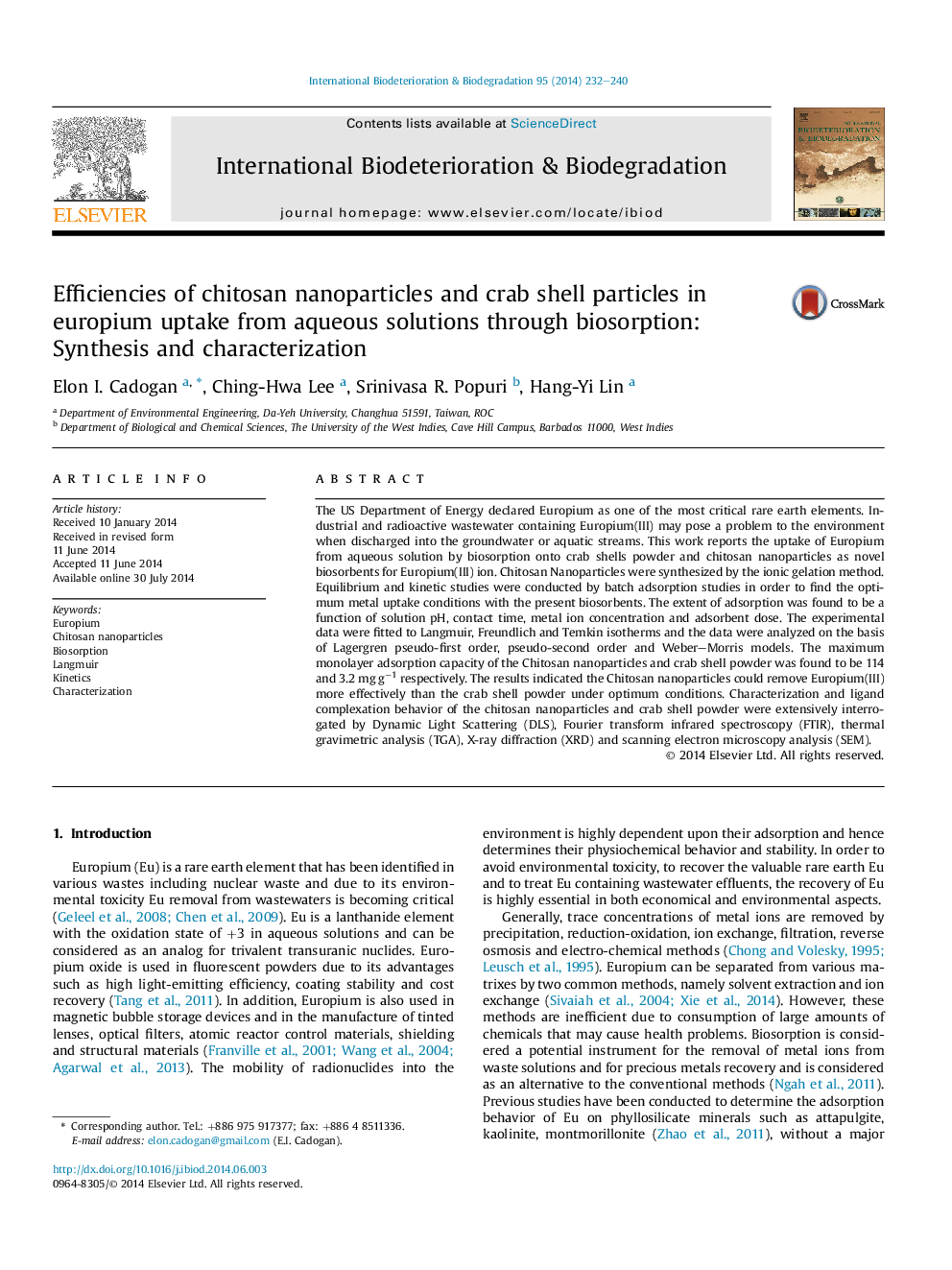| کد مقاله | کد نشریه | سال انتشار | مقاله انگلیسی | نسخه تمام متن |
|---|---|---|---|---|
| 4364628 | 1301716 | 2014 | 9 صفحه PDF | دانلود رایگان |
• Chitosan Nanoparticles were used as a novel material for the separation of Europium from aqueous solutions.
• The biosorption of Europium onto crab shell particles and chitosan nanoparticles was evaluated.
• Various operational conditions were studied and chitosan nanoparticles proved to be a more effective sorbent for Europium.
• Kinetics was Pseudo-second order and Weber–Morris models confirmed that intraparticle diffusion was the rate-limiting step.
• The data was fitted to the Langmuir, Freundlich and Temkin isotherms to best describe the mechanism of Eu sorption.
The US Department of Energy declared Europium as one of the most critical rare earth elements. Industrial and radioactive wastewater containing Europium(III) may pose a problem to the environment when discharged into the groundwater or aquatic streams. This work reports the uptake of Europium from aqueous solution by biosorption onto crab shells powder and chitosan nanoparticles as novel biosorbents for Europium(III) ion. Chitosan Nanoparticles were synthesized by the ionic gelation method. Equilibrium and kinetic studies were conducted by batch adsorption studies in order to find the optimum metal uptake conditions with the present biosorbents. The extent of adsorption was found to be a function of solution pH, contact time, metal ion concentration and adsorbent dose. The experimental data were fitted to Langmuir, Freundlich and Temkin isotherms and the data were analyzed on the basis of Lagergren pseudo-first order, pseudo-second order and Weber–Morris models. The maximum monolayer adsorption capacity of the Chitosan nanoparticles and crab shell powder was found to be 114 and 3.2 mg g−1 respectively. The results indicated the Chitosan nanoparticles could remove Europium(III) more effectively than the crab shell powder under optimum conditions. Characterization and ligand complexation behavior of the chitosan nanoparticles and crab shell powder were extensively interrogated by Dynamic Light Scattering (DLS), Fourier transform infrared spectroscopy (FTIR), thermal gravimetric analysis (TGA), X-ray diffraction (XRD) and scanning electron microscopy analysis (SEM).
Journal: International Biodeterioration & Biodegradation - Volume 95, Part A, November 2014, Pages 232–240
